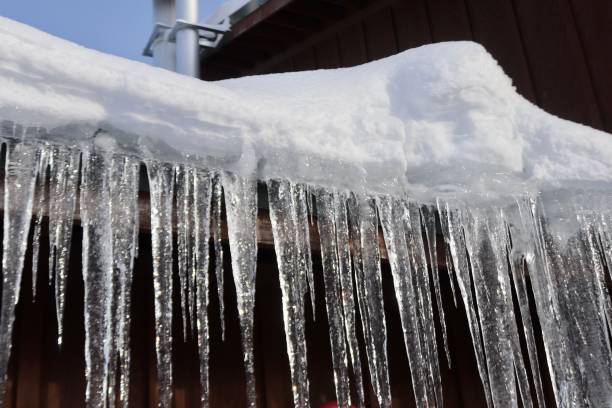How do you feel in relation to Winter Plumbing Precautions: Preventing Frozen Pipes?

Winter can ruin your pipes, especially by freezing pipes. Right here's how to prevent it from taking place and what to do if it does.
Intro
As temperatures drop, the threat of icy pipes increases, potentially leading to pricey repair services and water damage. Understanding just how to prevent icy pipes is crucial for home owners in chilly environments.
Understanding Icy Pipes
What triggers pipes to ice up?
Pipelines freeze when revealed to temperatures listed below 32 ° F (0 ° C) for extended periods. As water inside the pipelines ices up, it expands, taxing the pipe walls and possibly creating them to burst.
Dangers and problems
Frozen pipes can cause water system disturbances, home damages, and pricey fixings. Burst pipes can flood homes and cause comprehensive architectural damage.
Signs of Frozen Water Lines
Recognizing icy pipelines early can stop them from bursting.
How to identify icy pipelines
Look for decreased water flow from faucets, unusual odors or noises from pipelines, and noticeable frost on exposed pipelines.
Avoidance Tips
Insulating susceptible pipes
Cover pipes in insulation sleeves or utilize warm tape to secure them from freezing temperature levels. Concentrate on pipes in unheated or outside locations of the home.
Home heating methods
Keep indoor rooms adequately warmed, particularly areas with pipes. Open cabinet doors to permit cozy air to flow around pipelines under sinks.
Safeguarding Outdoor Plumbing
Yard hose pipes and exterior faucets
Separate and drain garden tubes before winter months. Install frost-proof faucets or cover exterior faucets with protected caps.
What to Do If Your Pipelines Freeze
Immediate actions to take
If you presume icy pipelines, maintain faucets available to relieve pressure as the ice melts. Utilize a hairdryer or towels taken in warm water to thaw pipelines slowly.
Long-Term Solutions
Structural modifications
Think about rerouting pipes away from exterior walls or unheated areas. Add extra insulation to attics, basements, and crawl spaces.
Upgrading insulation
Invest in top quality insulation for pipes, attics, and wall surfaces. Proper insulation helps preserve constant temperature levels and decreases the danger of icy pipelines.
Verdict
Stopping frozen pipes calls for aggressive procedures and quick responses. By understanding the reasons, indications, and preventive measures, home owners can safeguard their pipes during winter.
6 Proven Ways to Prevent Frozen Pipes and Protect Your Home
Disconnect and Drain Garden Hoses
Before winter arrives, start by disconnecting your garden hoses and draining any remaining water. Close the shut-off valves that supply outdoor hose bibs and leave the outdoor faucet open to allow any residual water to drain. For extra protection, consider using faucet covers throughout the colder months. It’s also important to drain water from any sprinkler supply lines following the manufacturer’s directions.
Insulate Exposed Pipes
Insulating your pipes is an effective way to prevent freezing. Pipe insulation is readily available at home improvement stores and is relatively inexpensive. Pay close attention to pipes in unheated areas such as the attic, basement, crawl spaces, or garage. Apply foam insulation generously to create a buffer against the cold. You can also wrap your pipes in heat tape or thermostat-controlled heat cables for added warmth.
Seal Air Leaks
Inspect your home for any cracks or openings that could let in cold air. Seal any holes around the piping in interior or exterior walls, as well as the sill plates where your home rests on its foundation. Additionally, make sure to keep your garage door closed unless you’re entering or exiting. Leaving it open creates a significant air leak that can lead to frozen pipes.
Allow Warm Air Circulation
During cold snaps, it’s essential to allow warm air to circulate evenly throughout your home. Leave interior doors ajar to promote better airflow. Open kitchen and bathroom cabinets to help distribute heat consistently around the rooms. If you have small children or pets, be sure to remove any household chemicals or potentially harmful cleaners from open cabinets for safety.
Let Faucets Drip
A small trickle of water can make a big difference in preventing ice formation inside your pipes. When temperatures drop significantly, start a drip of water from all faucets served by exposed pipes. This continuous flow helps prevent the water from freezing. Additionally, running a few faucets slightly can relieve pressure inside the pipes, reducing the chances of a rupture if the water inside does freeze.
https://choateshvac.com/6-proven-ways-to-prevent-frozen-pipes-and-protect-your-home/

Do you enjoy reading about Winter Plumbing Precautions: Preventing Frozen Pipes? Post a remark down the page. We would be glad to know your ideas about this article. We hope that you come back again before long. Appreciated our posting? Please share it. Help another person check it out. Kudos for your time. Kindly come by our website back soon.
Book Your Service
Comments on “Preventing Frozen Pipes in Cold Weather: Key Tips”